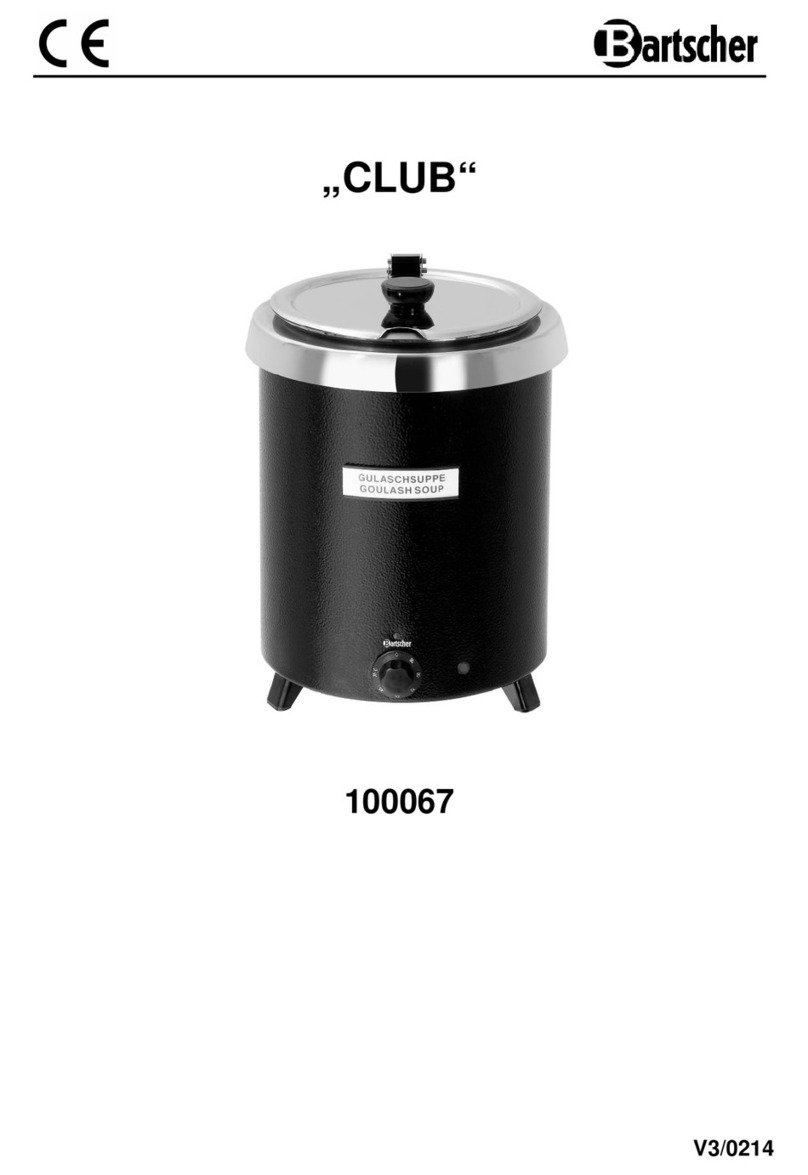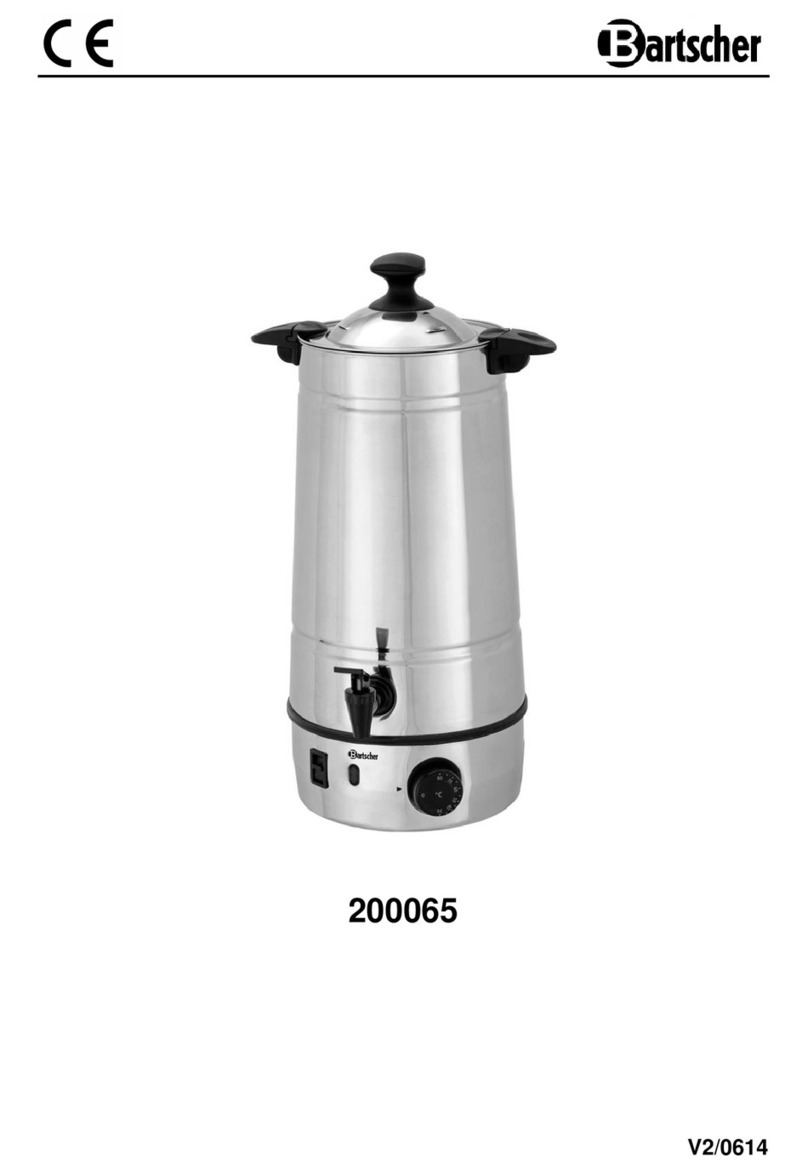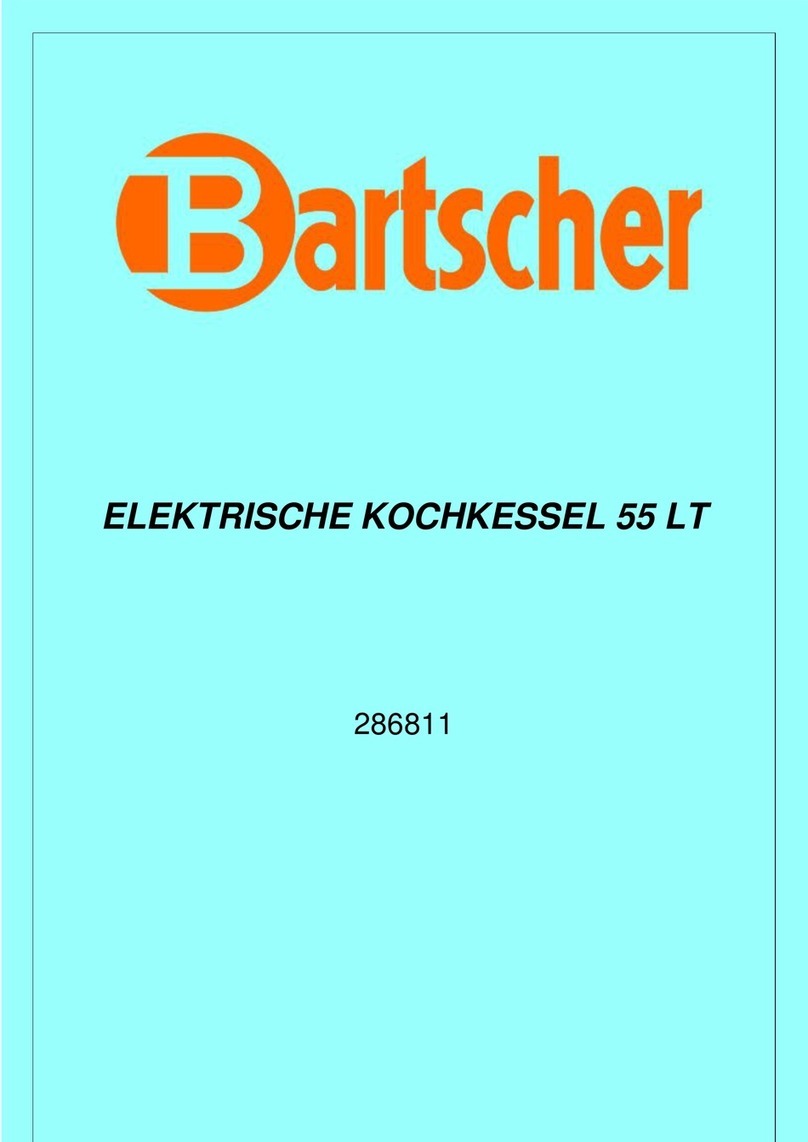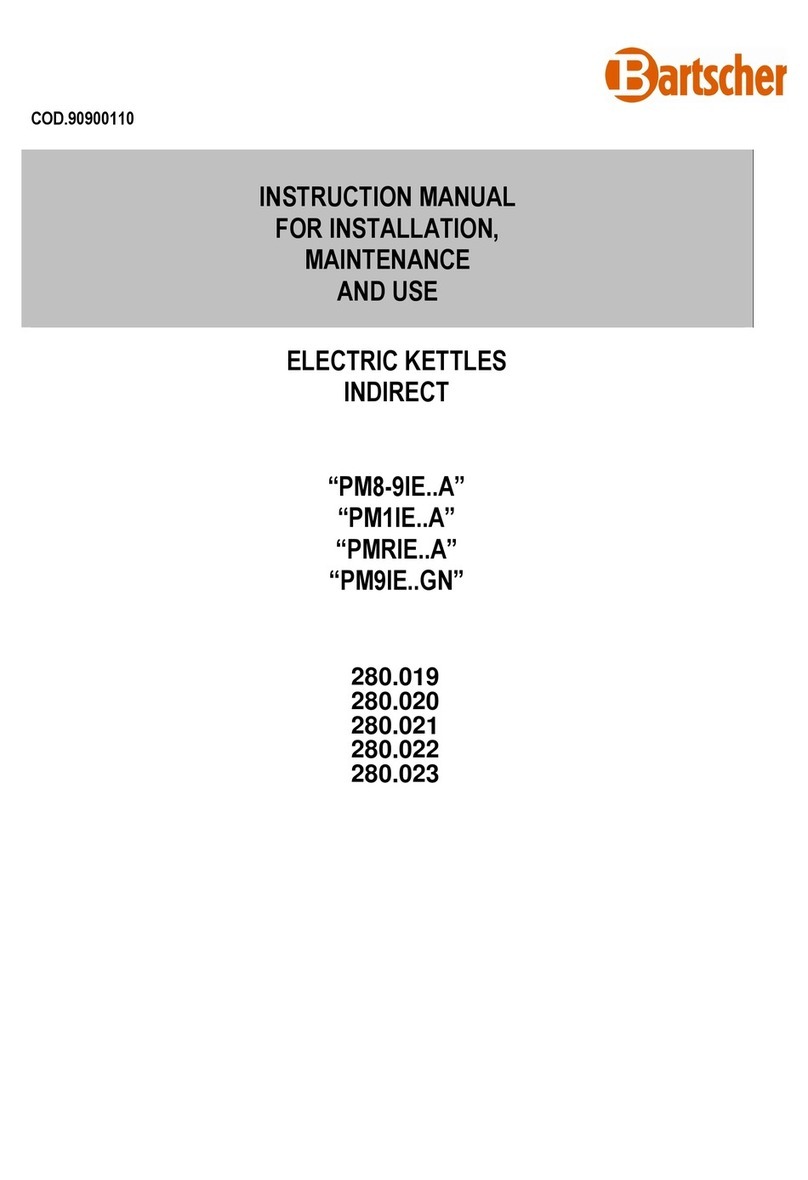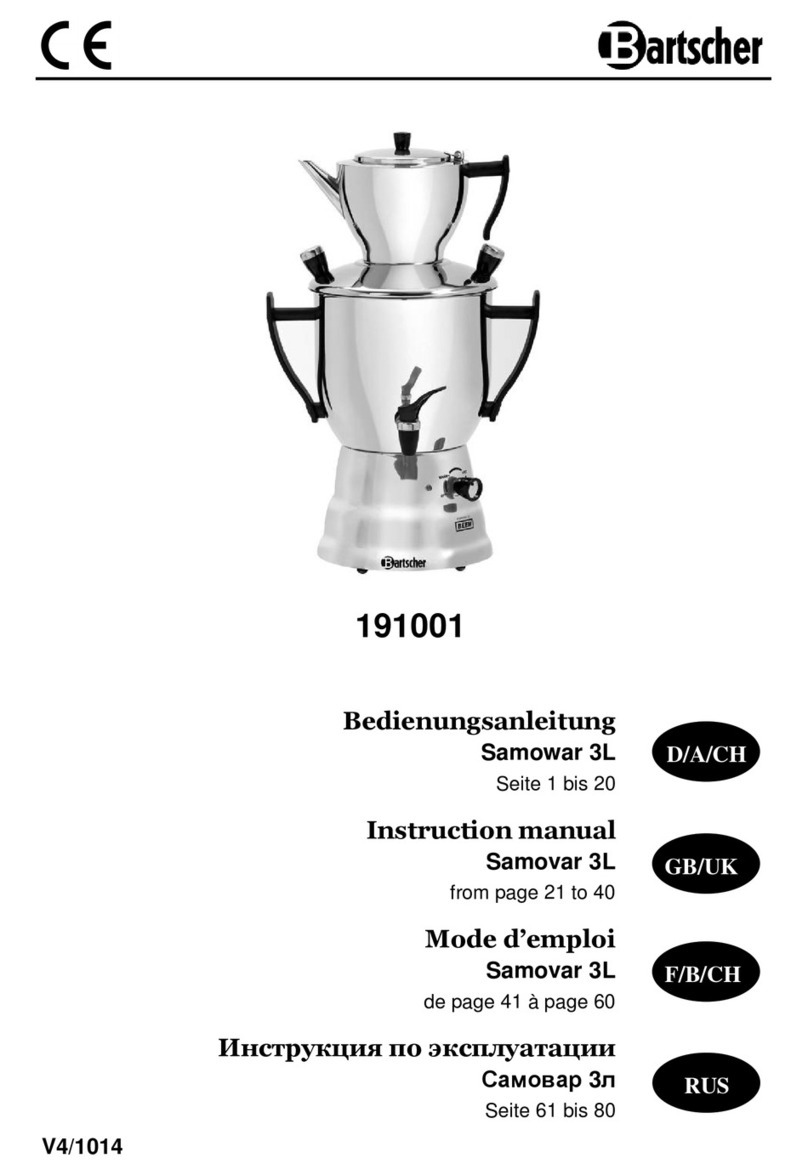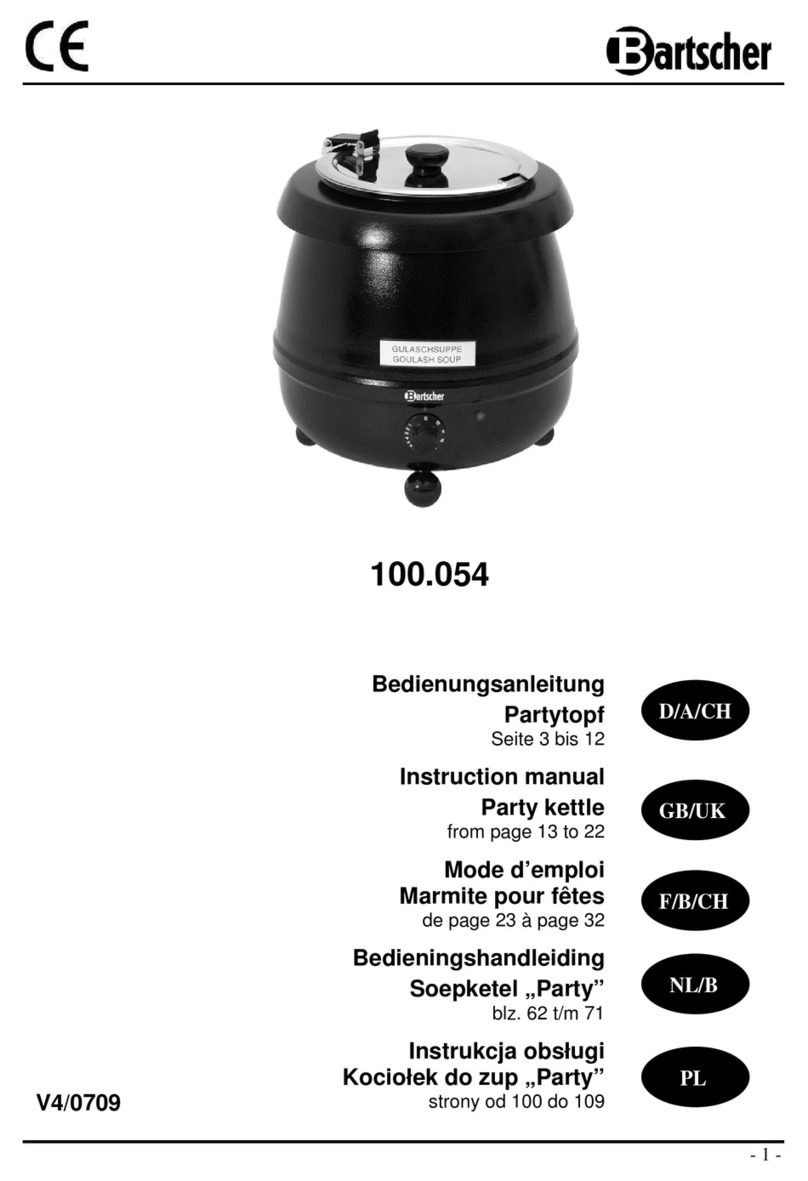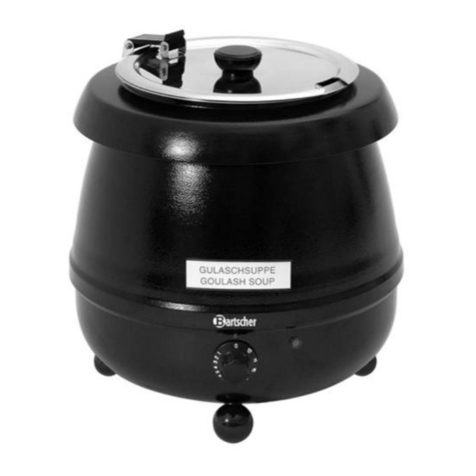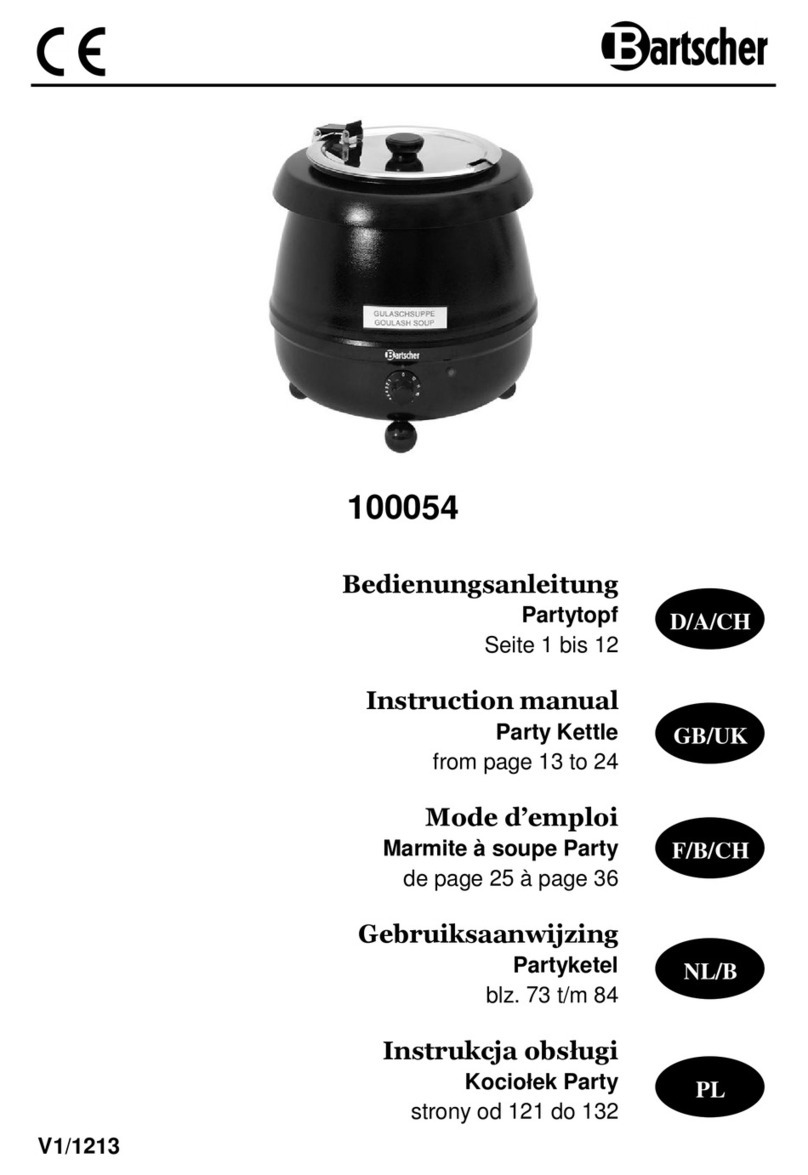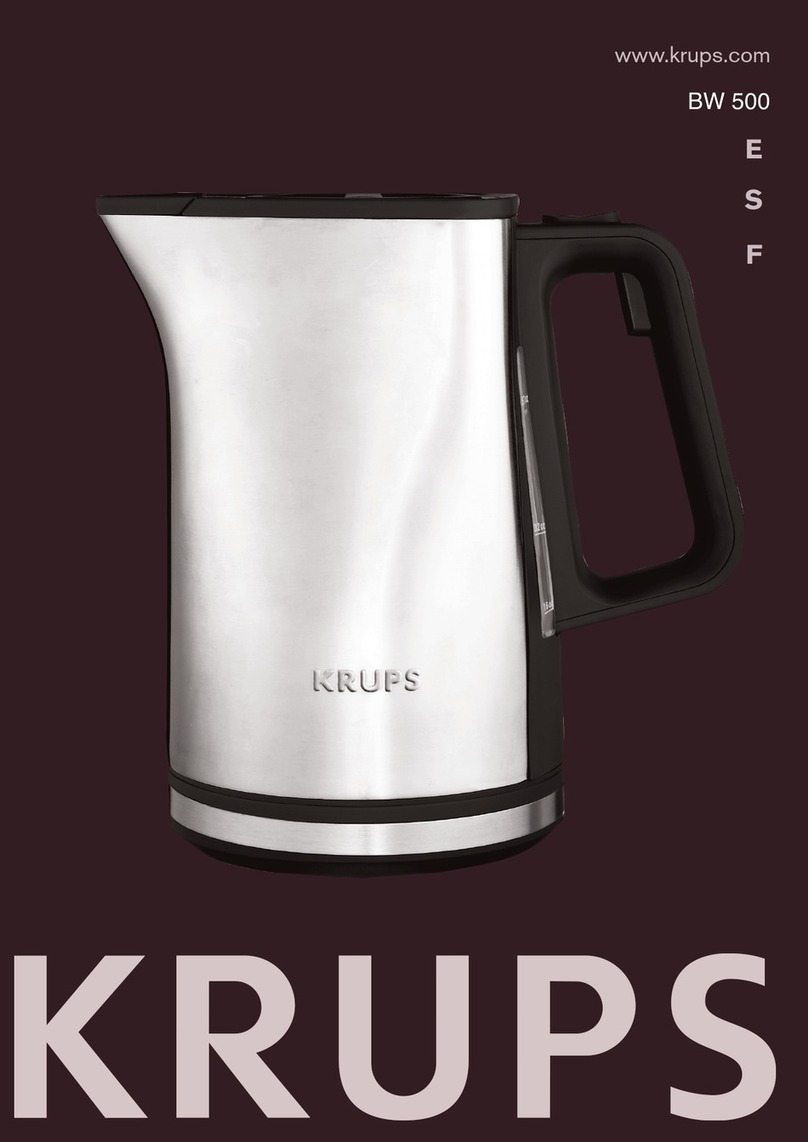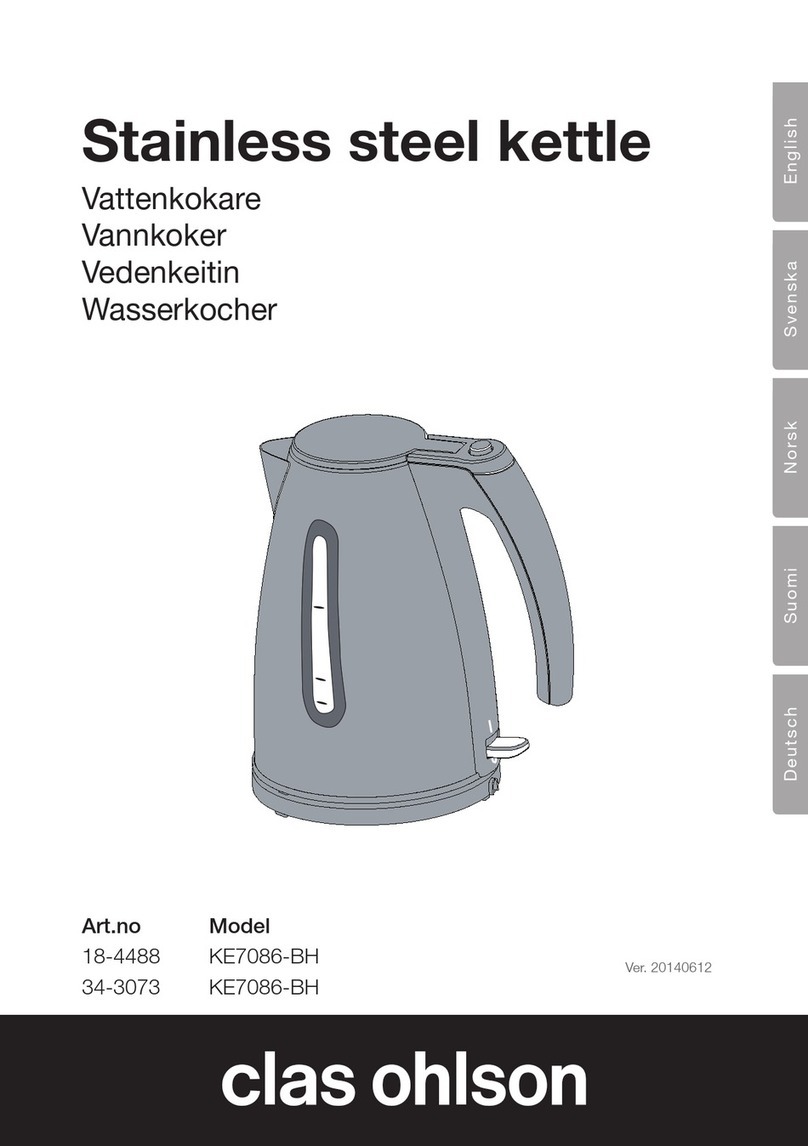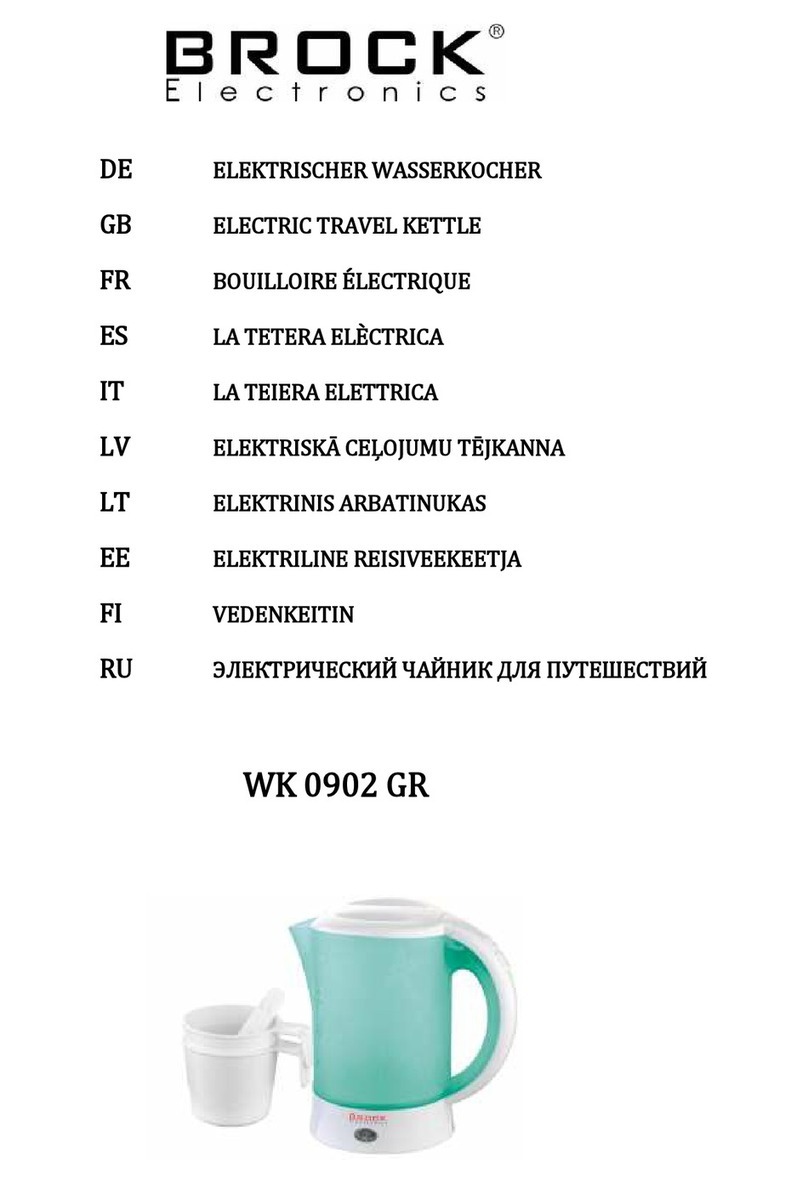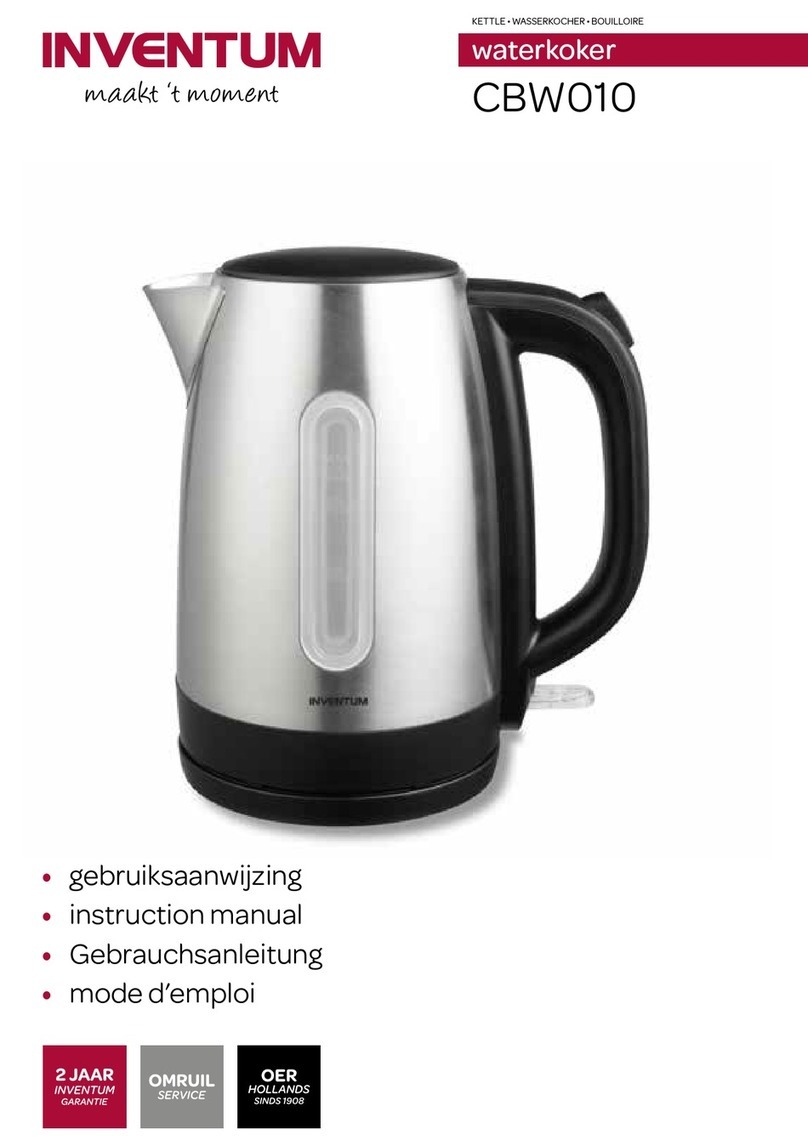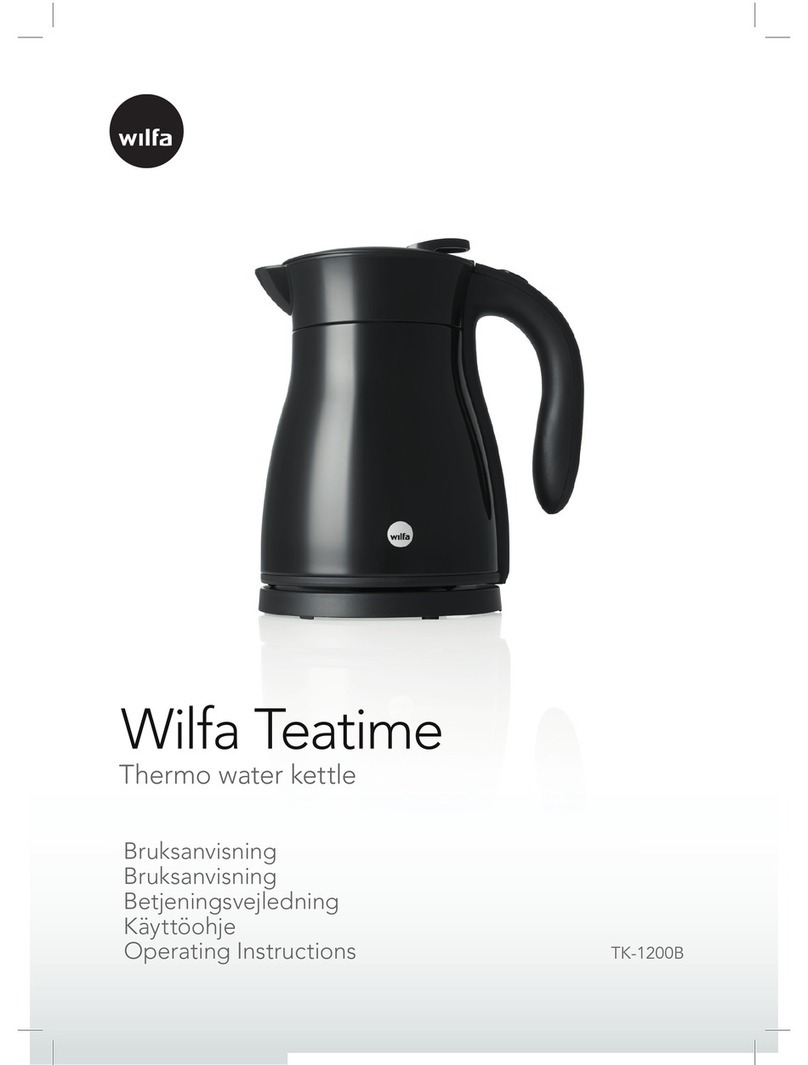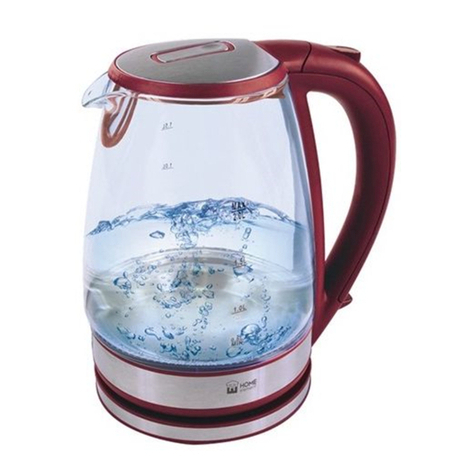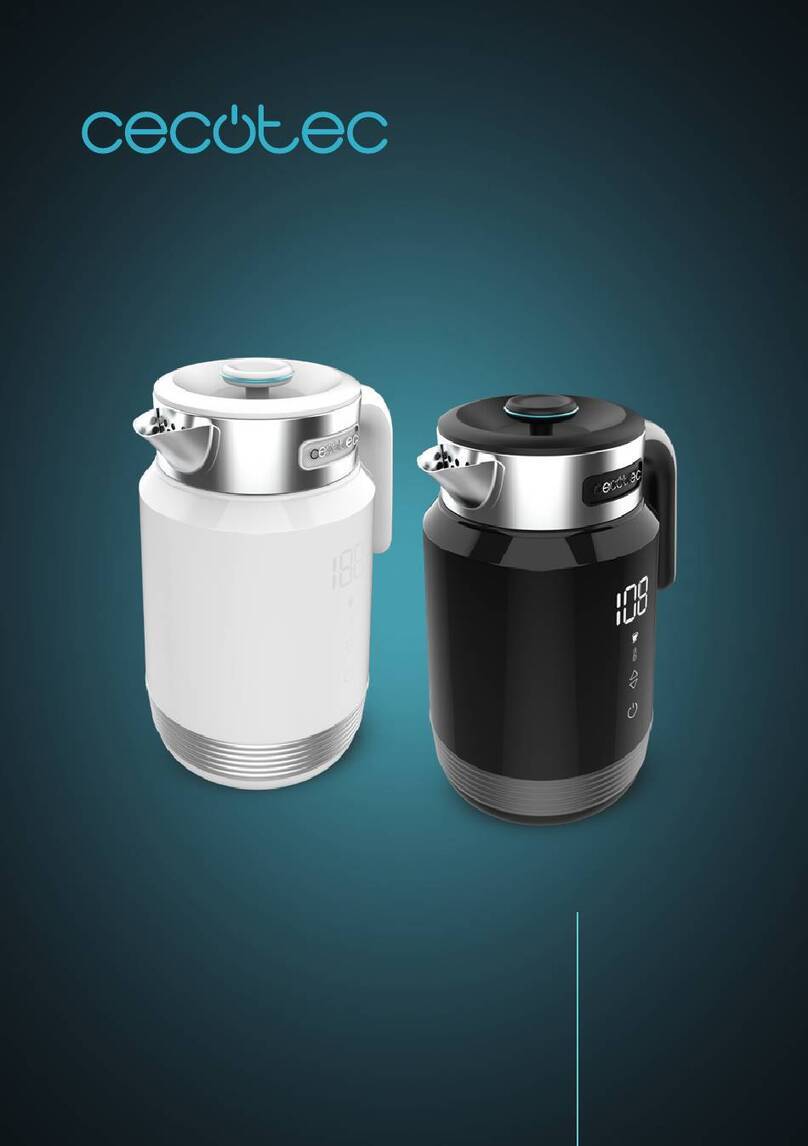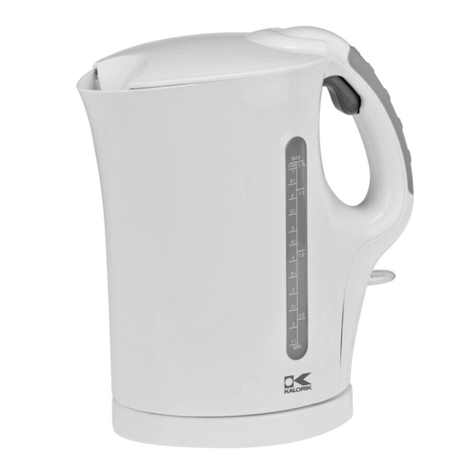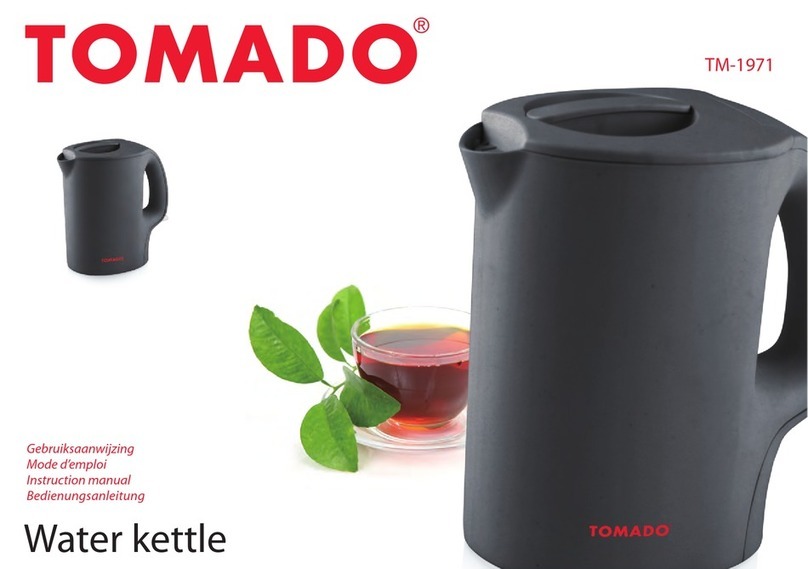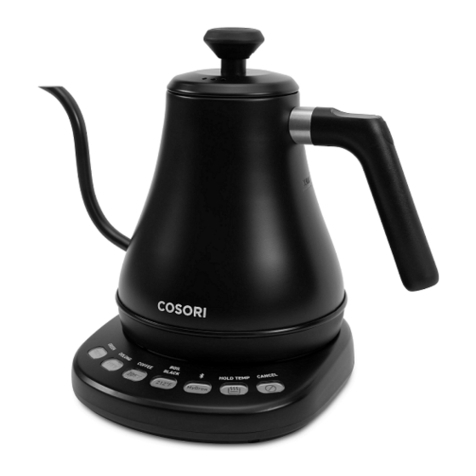
Installations-Wartungs und gebrauchs handbuch
Gasbeheizte Kochkessel S.900
2.3.1. CONTROL OF THE GAS INLET PRESSURE
The feed pressure is measured using a liquid pressure gauge ( e.g. a U-shaped pressure gauge,
minimum definition 0.1 mbar). The supply pressure can be measured directly at the inlet pressure
intake on the gas feed pipe. The inlet pressure intake can be reached by opening the lower front panel
once the two side screws have been removed. (See figure “Measuring the inlet pressure ”).
Before connecting the manometer, the screw of the pressure port must be loosened.
Connect the U-shaped pressure gauge while the appliance is operating to measure pressure.
The pressure reading on the gauge should be in the admitted pressure range stated in table 6b “Inlet
pressures” of paragraph “Technical data”.
If pressure figures should not be correct, apply to the gas board or the company which has installed the
system.
Having read the pressure, re-tighten the screw carefully.
Warning! The sealed adjuster screws on the gas solenoid valve must not be tampered with,
otherwise any guarantee rights shall be forfeited immediately.
2.3.2. CONTROL OF PRIMARY AIR FLOW
Primary air can be considered correctly adjusted if no flame lift is ensured when the burner is cold and
the injector lights when the burner is hot.
The distance “H” (see figure “Primary air regulation”) recommended for primary air adjustment is stated
in table 5 in the “Technical data”.
2.4. COMMISSIONING AND TESTING
Once all the connections have been made, the appliance and the overall installation must be checked
following the directions given in this manual.
Check in particular:
that the protective film has been removed from the external surfaces;
that connections have been made in accordance with the requirements and directions indicated in
this manual;
that all safety requirements in current standards, statutory regulations and directives have been met;
that the water and gas connections are leak-free;
that the electrical connection has been performed according to standards.
Now the appliance can be ignited following the instructions for use and controlling the following points:
- progressive ignition of the burner;
- even flames;
- flame security: checkthesepoints at bothminimum and maximum output.
Check that the flue gas exhaust is not clogged and that they are expelled without any hindrance.
The test report must be completed in full and submitted to the customer who should then sign in
acceptance. With effect from this moment, the appliance is covered by the manufacturer’s warranty.
2.5. CONVERSION TO OTHER TYPES OF GAS
To convert the appliance for use with another type of gas, the injectors on the main burners and on the
pilot burner need to be replaced. (See table 5 and figure “Main burner”).
- All the injectors needed for the different types of gas are contained in a bag supplied with the appliance.
- The supply pressure and the manual setting of minimum output should also be checked. (See table 4 –
Minimum output setting).
